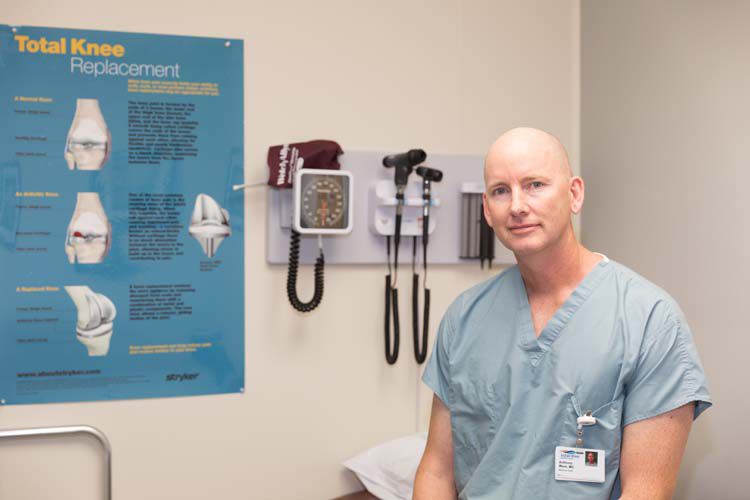
Nothing makes a medical device manufacturer, hospital or physician move faster than the prospect of having their Medicare reimbursements cut.
That daunting prospect looms large right now for orthopedic surgeons because the Centers for Medicare & Medicaid Services (CMS) has shifted how it pays medical providers for hip and knee replacements.
Out is the old “fee-for-service” model in which hospitals and doctors get paid for every procedure they perform – regardless of patient outcomes; in is the “Comprehensive Care for Joint Replacement” model that follows each patient for a three-month period from surgery through recovery.
As U.S. News & World Report says, “Doctors, hospitals, rehab centers, therapists, home health agencies and other providers will continue to get their regular reimbursements from Medicare. But at the end of the year, hospitals will be held accountable for the total cost of care over the 90-day period.”
If costs exceed Medicare’s targeted total, providers will have to pay back many of the dollars they received from Medicare.
If, however, total costs fall below Medicare’s targeted number, hospitals, surgeons and other providers will not only get to keep what they’ve already been paid, they will also be eligible for extra bonus dollars above and beyond that.
Since those reimbursements currently total somewhere between $8 billion and $10 billion a year just for hip and knee replacements, there’s a lot of cash at risk, now and in the future, because of the change.
Well over 600,000 people in the U.S. got joint replacements this past year and the National Institutes of Health forecasts that number will climb to 3 million a year by 2020.
So, the Sebastian River Medical Center has turned to Stryker Performance Solutions and its Marshall Steele Program for help in navigating the new environment.
SRMC orthopedic surgeon Tony Ware explains: “Dr. Marshall Steele is an orthopedic surgeon who was trying to devise a pathway for total joint patients from pre-op through surgery, post-op and into rehab. What he was trying to do was make a seamless pathway that was standardized so each patient would sort of go through the same protocol and get the same care. And the goal was to maximize outcomes, improve outcomes and reduce cost.”
That is in line with the goal of the new Medicare reimbursement plan, which “is to give hospitals a financial incentive to work with physicians, home health agencies, skilled nursing facilities and other providers to make sure [Medicare] beneficiaries get the coordinated care they need,” according to the Department of Health and Human Services.
HHS continues by adding that hip and knee replacement patients “receive care from many providers and suppliers,” and points out that can often lead to serious complications and re-hospitalizations which only drive health costs higher.
That’s especially important here on the Treasure Coast.
The Pew Charitable Trust, which calls Florida “the grayest state in the nation,” points out that a whopping 20 percent of the state’s population is 65 or older and has – by far – the highest per capita number of hip and knee replacements of any state in the union.
Says Ware: “So Sebastian has decided to go ahead and implement this Marshall Steele Program that was designed by an orthopedic surgeon. They come in and examine our existing pathways and they make changes and suggestions and implement this new pathway and plan.”
Not even the actual prosthetic replacement joints will be immune to the cost-cutting knife, according to Ware. “There is a fairly wide range of cost for implants,” Ware says, and then adds, “I think it’s incumbent upon the physicians to work with the hospital to try to decrease those costs.”
Ware adds “we have to find what works best for the patient and for us in terms of surgery. This [Marshall Steele Program] is hopefully going to be a good way to do that.”
As an orthopedic surgeon, Ware quite naturally looks at Medicare’s new payment directives from a provider’s point of view, saying, “Medicare, in its infinite wisdom, has decided to say you’re on the hook” for any complications the patient experiences during that 90-day period.
But Medicare is looking at these new rules through the patients’ eyes.
If a doctor cuts into someone’s knee, grinds off large sections of bone, drills a series of holes into what’s left of that bone, inserts an artificial joint into those holes and 90 days later that patient still can’t walk or move about freely, maybe the providers involved shouldn’t be paid as much as those who do restore full mobility to their joint replacement patients.
Since Medicare’s Comprehensive Care for Joint Replacement payment plan was just launched in April 2016, there isn’t yet a statistically valid sampling of how effective it is or is going to be. Still, CMS remains confident it will “support better and more efficient care” for Medicare hip and knee replacement patients.
Dr. Anthony Ware is with the Sebastian River Medical Center. His office is at 8005 Bay Street, Suite Two in Sebastian. The phone number is 772-589-0331.



